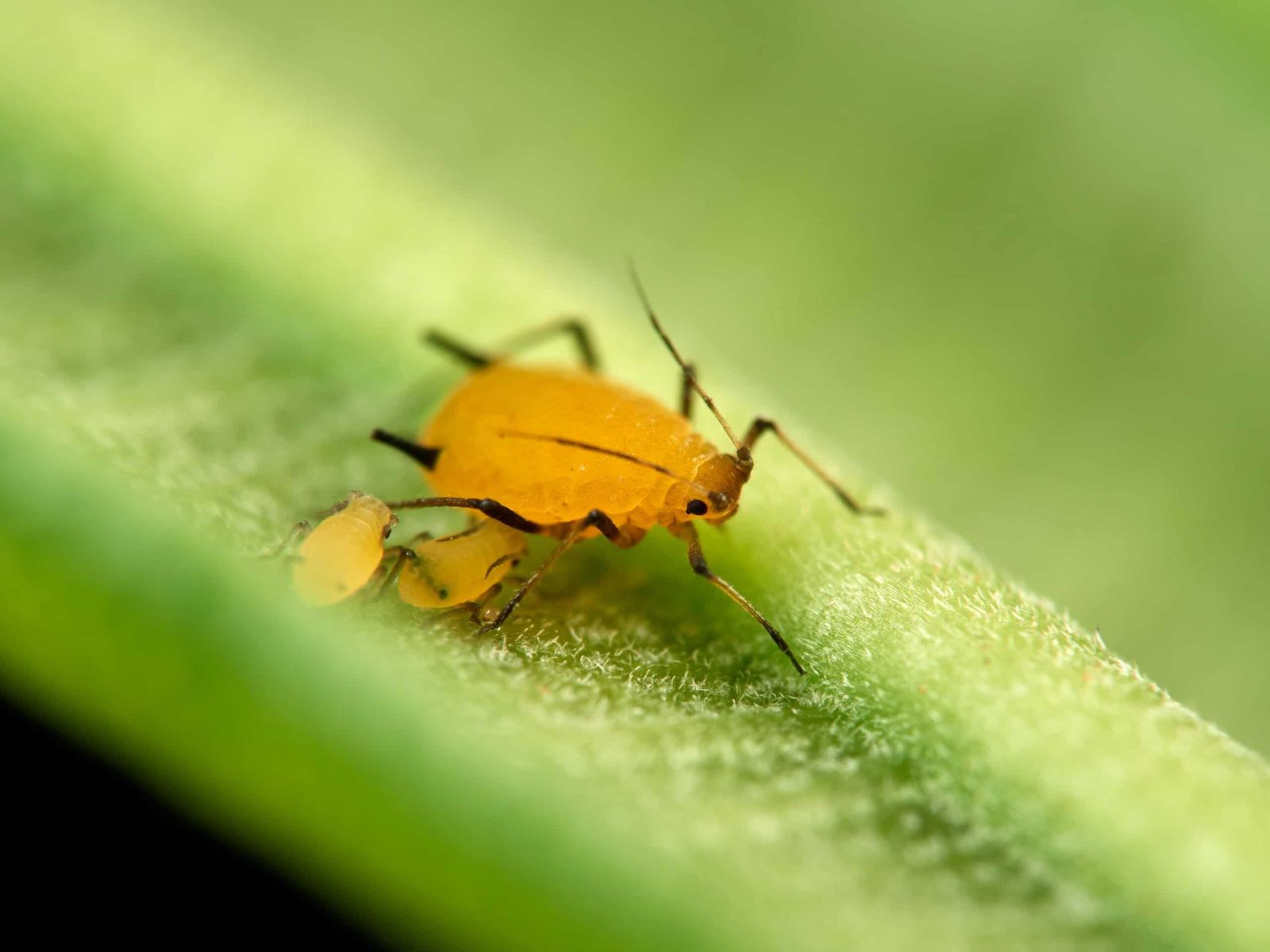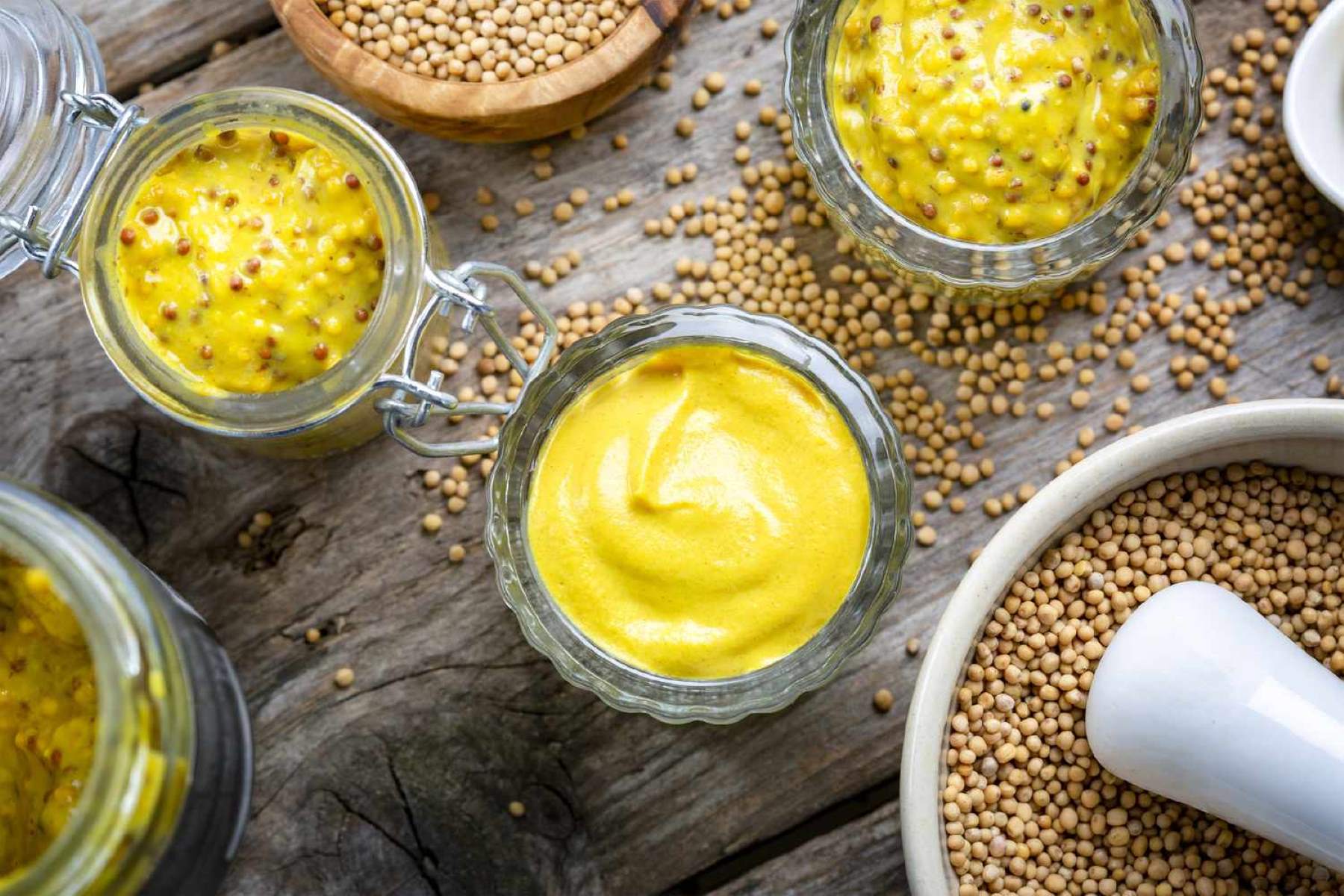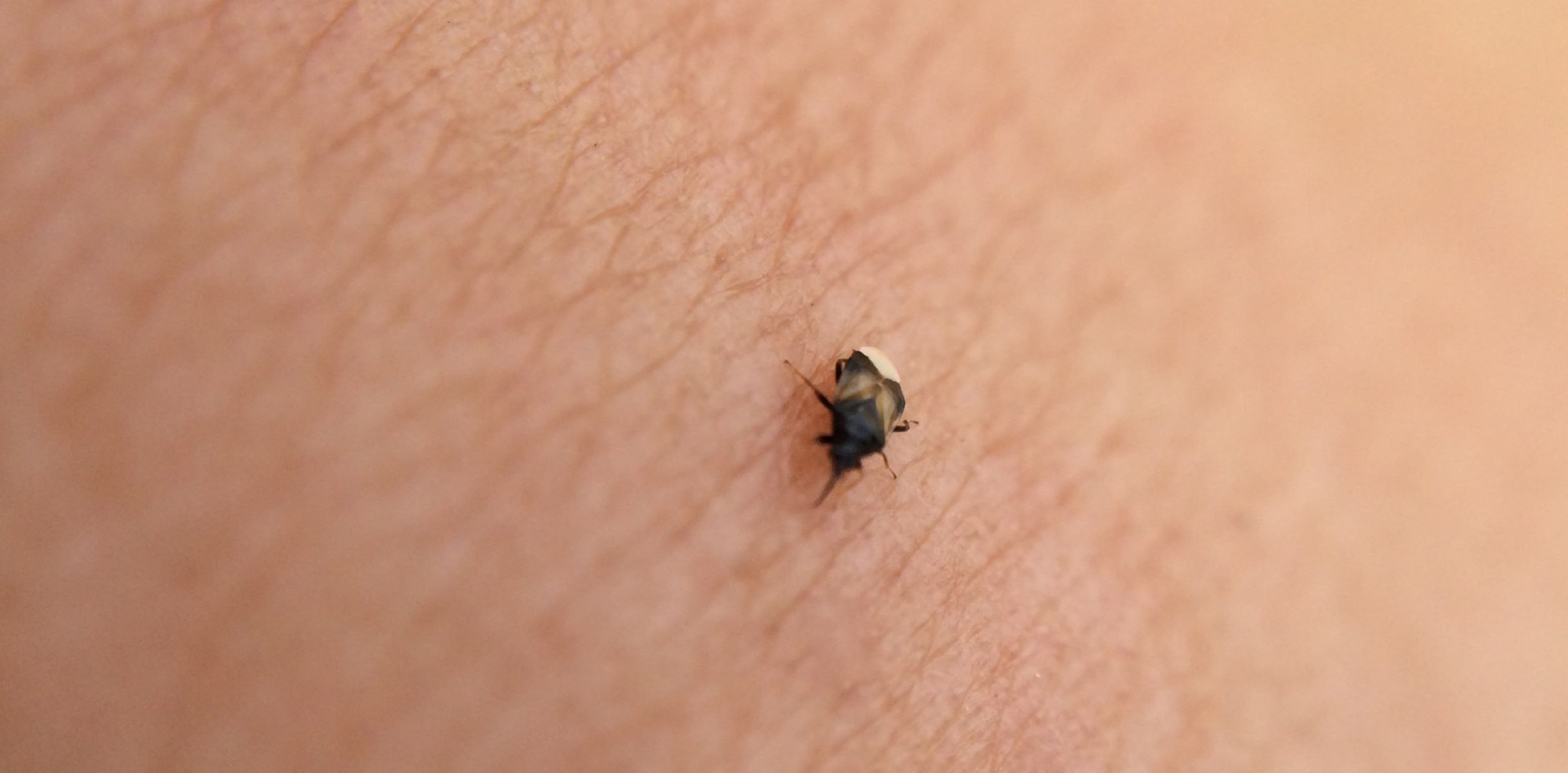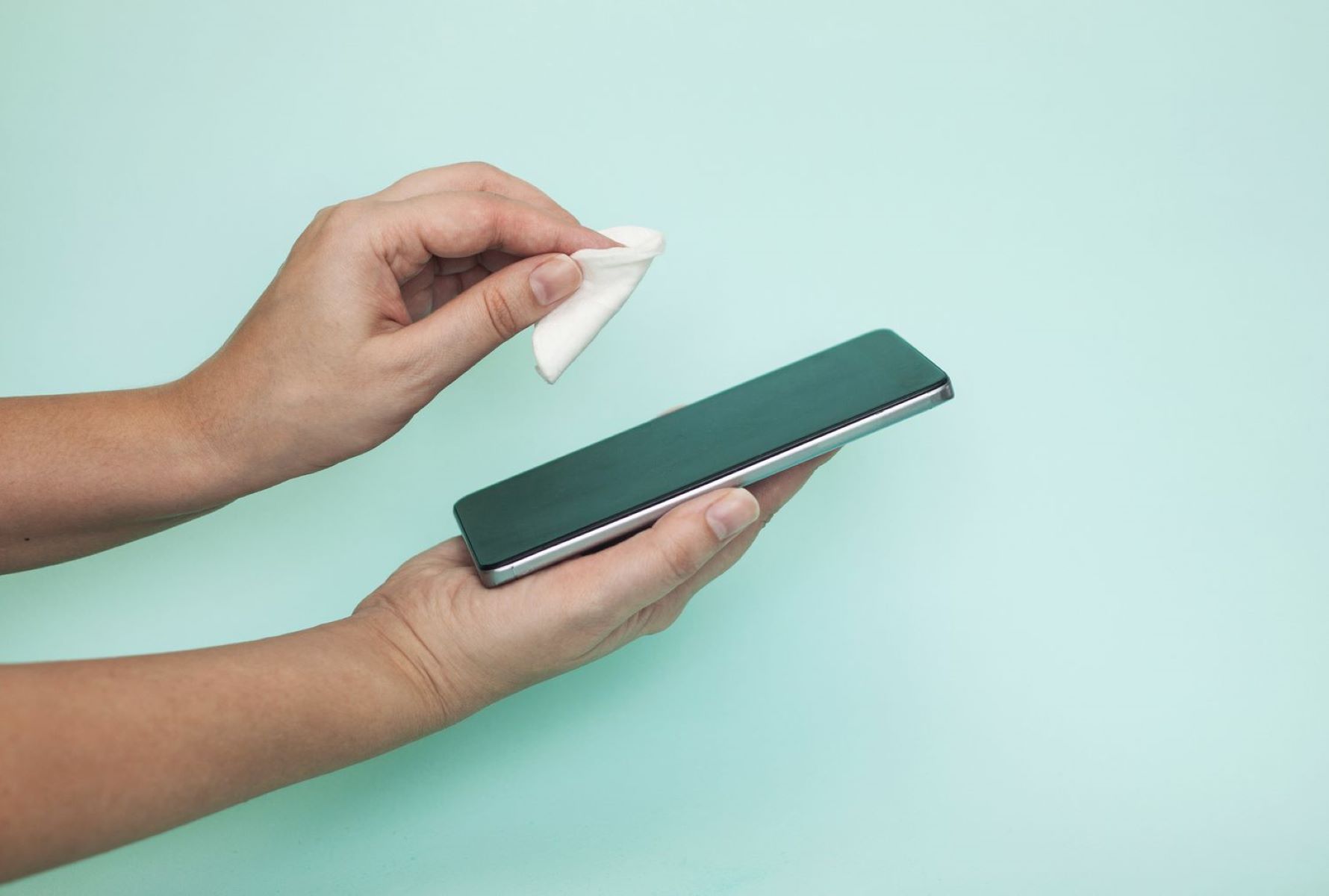Home>Home and Garden>Say Goodbye To Those Pesky Little Yellow Bugs On Your Plants With These Creative Solutions!


Home and Garden
Say Goodbye To Those Pesky Little Yellow Bugs On Your Plants With These Creative Solutions!
Published: January 21, 2024
Say goodbye to pesky yellow bugs on your plants with these creative home and garden solutions. Protect your plants and keep your garden thriving!
(Many of the links in this article redirect to a specific reviewed product. Your purchase of these products through affiliate links helps to generate commission for Regretless.com, at no extra cost. Learn more)
Table of Contents
Introduction
Gardening is a delightful and rewarding pastime, allowing us to connect with nature and cultivate beautiful, thriving plants. However, the presence of pesky little yellow bugs can quickly turn this tranquil activity into a frustrating battle. These tiny invaders, often aphids or whiteflies, have a knack for wreaking havoc on our beloved plants, sucking the sap and causing unsightly damage.
But fear not! There are numerous effective and creative solutions to bid adieu to these bothersome critters and restore your garden to its flourishing state. In this article, we will explore a range of natural pest repellents, homemade pest sprays, companion planting techniques, the introduction of beneficial insects, and the implementation of physical barriers. By incorporating these strategies into your gardening routine, you can reclaim your plants from the clutches of these yellow pests and foster a thriving, pest-free garden.
Let's delve into these innovative approaches and equip ourselves with the knowledge and tools to combat these tiny adversaries, allowing our gardens to thrive and flourish once more.
Natural Pest Repellents
When it comes to protecting your plants from those pesky yellow bugs, natural pest repellents can be a game-changer. Not only are these solutions environmentally friendly, but they also offer a gentle yet effective approach to pest control.
1. Neem Oil
Derived from the seeds of the neem tree, neem oil is a potent natural insecticide and repellent. It disrupts the feeding and reproductive patterns of various pests, including aphids and whiteflies. By applying a diluted neem oil solution to your plants, you can deter these yellow bugs and prevent further infestations.
2. Garlic Spray
The pungent aroma of garlic is a powerful deterrent for many garden pests, including aphids. To create a homemade garlic spray, simply blend several cloves of garlic with water and strain the mixture. Dilute the resulting liquid and spray it onto the affected plants. This natural repellent not only discourages pests but also provides a cost-effective and chemical-free solution for your garden.
3. Citrus Peels
Citrus peels, such as those from oranges and lemons, contain natural compounds that are unappealing to many insects. Placing citrus peels around the base of your plants or incorporating them into the soil can help repel yellow bugs while adding a refreshing scent to your garden.
4. Essential Oils
Certain essential oils, such as peppermint, eucalyptus, and lavender, possess insect-repelling properties. Diluting these oils with water and spraying the solution onto your plants can create an aromatic barrier that deters pests without harming the environment or beneficial insects.
5. Soap Solution
A simple yet effective natural pest repellent can be made by mixing mild liquid soap with water. When sprayed onto infested plants, the soap solution disrupts the pests' outer membranes, ultimately leading to their demise. This method provides a gentle yet impactful approach to managing yellow bug infestations.
By incorporating these natural pest repellents into your gardening routine, you can effectively combat those pesky yellow bugs while maintaining a healthy and vibrant garden ecosystem. With these eco-friendly solutions at your disposal, you can bid farewell to the days of battling garden pests with harsh chemicals and embrace a more sustainable and harmonious approach to pest management.
Homemade Pest Sprays
Homemade pest sprays offer a cost-effective and environmentally friendly means of combating yellow bugs in your garden. These DIY concoctions harness the power of natural ingredients to repel and eliminate pests while minimizing the use of harsh chemicals. By creating your own homemade pest sprays, you can take proactive measures to protect your plants and promote a thriving garden ecosystem.
1. Oil and Soap Spray
A popular homemade pest spray involves combining vegetable oil, such as olive or jojoba oil, with mild liquid soap and water. This emulsifying mixture can effectively suffocate and dehydrate soft-bodied pests like aphids and whiteflies. When applied to infested plants, the oil and soap spray coats the pests, disrupting their respiratory functions and ultimately leading to their demise. This gentle yet potent method provides an alternative to conventional chemical insecticides, safeguarding both your plants and the surrounding environment.
2. Chili Pepper Spray
The natural heat and pungency of chili peppers make them a formidable ingredient for homemade pest sprays. By infusing water with finely chopped chili peppers and allowing the mixture to steep, you can create a potent deterrent for yellow bugs and other garden pests. The resulting spray, when applied to plants, acts as a powerful repellent, discouraging pests from feeding and laying eggs. This approach not only offers an organic and sustainable pest control solution but also adds a touch of spice to your gardening endeavors.
3. Herbal Infusions
Harnessing the natural repellent properties of herbs, such as basil, mint, and thyme, can yield effective homemade pest sprays. By steeping these aromatic herbs in hot water and allowing the infusion to cool, you can create a fragrant and pest-repelling spray. The potent scents emitted by these herbal infusions serve as a natural deterrent for yellow bugs and other unwanted garden visitors, offering a harmonious and aromatic defense for your plants.
4. Vinegar Solution
A simple yet powerful homemade pest spray can be crafted using white vinegar and water. This acidic solution, when sprayed onto infested plants, disrupts the protective coatings of pests and creates an inhospitable environment for them. The acetic acid in vinegar acts as a natural pesticide, effectively deterring yellow bugs and other soft-bodied pests without posing harm to your plants or the environment.
By exploring and experimenting with these homemade pest sprays, you can discover a diverse range of natural solutions to combat yellow bugs in your garden. These DIY concoctions not only provide effective pest control but also promote a sustainable and eco-friendly approach to gardening. Embracing the power of homemade pest sprays allows you to nurture your plants while minimizing the impact of harmful chemicals, creating a thriving and vibrant garden sanctuary.
Companion Planting
Companion planting is a time-honored gardening practice that involves strategically pairing compatible plants to enhance growth, repel pests, and improve overall garden health. When it comes to combating yellow bugs and fostering a pest-resistant garden, companion planting offers a natural and holistic approach that can yield remarkable results.
1. Marigolds
Marigolds are renowned for their pest-repelling properties, particularly against aphids and whiteflies. Planting marigolds alongside susceptible crops can deter yellow bugs and other pests, thanks to the flowers' natural aroma and root secretions. These vibrant blooms not only add a splash of color to the garden but also serve as a formidable ally in the fight against pest infestations.
2. Nasturtiums
Nasturtiums are prized for their dual role in companion planting. These trailing plants act as a sacrificial crop, attracting yellow bugs away from more delicate plants. Additionally, nasturtiums release compounds that repel aphids, making them a valuable asset in warding off these pesky pests. By strategically incorporating nasturtiums in your garden, you can create a natural barrier against yellow bugs while promoting a diverse and harmonious plant community.
3. Basil
The aromatic presence of basil not only enhances culinary delights but also serves as a natural deterrent for yellow bugs and other garden pests. Planting basil near susceptible crops can help repel aphids and whiteflies, minimizing the risk of infestations. Furthermore, the aromatic foliage of basil adds a delightful fragrance to the garden while contributing to a pest-resistant and thriving ecosystem.
4. Chrysanthemums
Chrysanthemums contain natural compounds called pyrethrins, which are widely recognized for their insecticidal properties. These compounds repel and deter a range of garden pests, including aphids and whiteflies. Incorporating chrysanthemums into your garden can provide a natural defense against yellow bugs while infusing the landscape with their vibrant and captivating blooms.
By embracing the principles of companion planting and strategically integrating pest-repelling plants into your garden, you can create a dynamic and resilient ecosystem that naturally mitigates the risk of yellow bug infestations. This approach not only contributes to a vibrant and diverse garden but also minimizes the reliance on chemical pest control methods, fostering a sustainable and harmonious gardening environment.
Beneficial Insects
In the intricate tapestry of the natural world, beneficial insects play a pivotal role in maintaining ecological balance and safeguarding our gardens against pest infestations. These tiny allies, often overlooked or mistaken for pests themselves, offer a sustainable and chemical-free approach to managing yellow bugs and other garden nuisances.
1. Ladybugs
Ladybugs, also known as ladybirds or lady beetles, are revered for their voracious appetite for aphids, making them invaluable allies in pest control. These charming, polka-dotted insects can consume a staggering number of aphids, effectively curbing their populations and preventing widespread damage to plants. By attracting and nurturing ladybugs in the garden, you can harness their predatory prowess to keep yellow bugs at bay while promoting a thriving and balanced ecosystem.
2. Lacewings
The delicate and ethereal appearance of lacewings belies their ferocious appetite for garden pests. These graceful insects, with their intricate lacy wings, feed on aphids, whiteflies, and other soft-bodied pests, making them natural allies in pest management. By creating a welcoming habitat for lacewings, such as by providing dense vegetation and nectar-producing flowers, you can encourage their presence in the garden and benefit from their pest-controlling prowess.
3. Hoverflies
Hoverflies, often mistaken for bees due to their striking yellow and black markings, are valuable allies in biological pest control. Their larvae, known as aphid lions, voraciously consume aphids, effectively reducing their numbers and preventing widespread damage to plants. By cultivating a diverse and pollinator-friendly garden, you can attract hoverflies and capitalize on their pest-controlling capabilities, creating a harmonious and resilient ecosystem.
4. Parasitic Wasps
Parasitic wasps, despite their ominous-sounding name, are instrumental in regulating pest populations in the garden. These tiny wasps lay their eggs inside aphids and other pests, ultimately leading to the demise of the host insects. By providing a hospitable environment for parasitic wasps, characterized by diverse plant species and nectar-rich flowers, you can enlist these natural allies in the battle against yellow bugs, fostering a balanced and pest-resistant garden.
5. Praying Mantises
Praying mantises, with their distinctive elongated bodies and formidable hunting skills, are formidable predators of a wide range of garden pests, including aphids and whiteflies. These stealthy insects lie in wait, ready to pounce on unsuspecting prey, making them valuable allies in pest management. By welcoming praying mantises into the garden, you can benefit from their predatory prowess and contribute to a natural and sustainable approach to pest control.
By recognizing and harnessing the potential of these beneficial insects, we can cultivate a resilient and pest-resistant garden ecosystem while minimizing the reliance on chemical pesticides. Embracing the intricate web of nature's allies allows us to create a harmonious and thriving environment, where yellow bugs are kept in check, and our plants can flourish in abundance.
Physical Barriers
In the battle against those pesky yellow bugs, implementing physical barriers can serve as an effective line of defense for your plants. These barriers create a protective shield, thwarting the entry and proliferation of yellow bugs while safeguarding the overall health of your garden.
1. Row Covers
Row covers, typically made from lightweight, breathable fabric, offer a simple yet powerful means of shielding plants from yellow bug infestations. By draping row covers over susceptible crops, you can create a barrier that prevents pests from accessing the plants while allowing sunlight, air, and water to permeate. This approach not only safeguards your plants from yellow bugs but also provides a physical shield against other garden pests, creating a secure and nurturing environment for your crops to thrive.
2. Mesh Barriers
Mesh barriers, crafted from fine netting or mesh material, serve as an effective deterrent for yellow bugs and other airborne pests. By enclosing vulnerable plants with mesh barriers, you can create a physical blockade that impedes the entry of yellow bugs while facilitating optimal airflow and light penetration. This method offers a non-invasive and sustainable approach to pest management, allowing your plants to flourish within a protected and pest-resistant enclosure.
3. Sticky Traps
Sticky traps, adorned with bright yellow surfaces, can be strategically placed in the garden to intercept and capture yellow bugs and other flying pests. These adhesive traps act as physical barriers, luring pests with their vibrant color and ensnaring them upon contact. By deploying sticky traps in the vicinity of susceptible plants, you can effectively reduce the population of yellow bugs while minimizing their impact on your garden, creating a proactive and targeted defense against these persistent pests.
4. Mulch
Utilizing organic mulch, such as straw or wood chips, around the base of plants can serve as a natural physical barrier against yellow bugs. The layer of mulch acts as a protective shield, deterring pests from accessing the plant stems and roots while promoting soil moisture retention and weed suppression. This approach not only fortifies the plants against yellow bug infestations but also contributes to the overall health and vitality of your garden, creating a resilient and nurturing environment for your beloved crops.
By incorporating these physical barriers into your pest management strategy, you can establish a formidable defense against yellow bugs while promoting a thriving and pest-resistant garden. These non-invasive and sustainable methods not only protect your plants from pest infestations but also contribute to a harmonious and balanced gardening ecosystem, where your crops can flourish in abundance.
Conclusion
In the intricate tapestry of gardening, the presence of pesky yellow bugs can pose a significant challenge, threatening the health and vitality of our beloved plants. However, armed with a diverse array of innovative and eco-friendly solutions, we can effectively bid adieu to these persistent pests and restore our gardens to a state of flourishing abundance.
From the utilization of natural pest repellents and homemade pest sprays to the strategic implementation of companion planting, beneficial insects, and physical barriers, we have explored a rich tapestry of approaches to combat yellow bugs while fostering a harmonious and pest-resistant garden ecosystem.
By harnessing the power of natural pest repellents such as neem oil, garlic spray, and citrus peels, we can create a formidable defense against yellow bugs while embracing sustainable and environmentally friendly pest management practices. The utilization of homemade pest sprays, infused with the potency of oil and soap, chili peppers, herbal infusions, and vinegar, offers a cost-effective and non-invasive means of safeguarding our plants from pest infestations.
Companion planting emerges as a time-honored strategy, allowing us to strategically pair pest-repelling plants such as marigolds, nasturtiums, basil, and chrysanthemums with vulnerable crops, creating a natural and harmonious defense against yellow bugs. Furthermore, the enlistment of beneficial insects, including ladybugs, lacewings, hoverflies, parasitic wasps, and praying mantises, empowers us to cultivate a resilient and balanced garden ecosystem, where natural allies work in tandem to mitigate the risk of pest infestations.
Finally, the implementation of physical barriers, such as row covers, mesh barriers, sticky traps, and mulch, offers a proactive and targeted approach to shielding our plants from yellow bugs, creating a secure and nurturing environment for our crops to thrive.
In embracing these diverse and creative solutions, we not only safeguard our plants from the clutches of yellow bugs but also foster a sustainable and harmonious gardening environment. By minimizing the reliance on chemical pesticides and embracing the intricate web of nature's allies, we can create a vibrant and resilient garden where our plants can flourish in abundance, free from the persistent threat of yellow bug infestations.
Let us embark on this journey armed with knowledge, creativity, and a deep reverence for the natural world, as we cultivate gardens that are not only beautiful and bountiful but also harmonious and pest-resistant. Together, we can bid farewell to those pesky little yellow bugs and nurture thriving, pest-free gardens that serve as sanctuaries of natural beauty and abundance.









